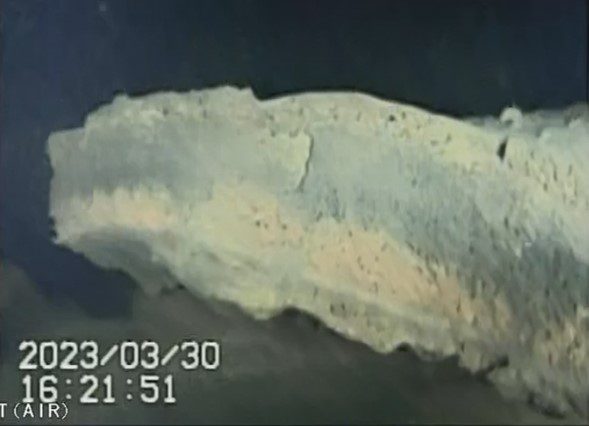Robotic probes have dived into the watery ruins of the Fukushima nuclear power plant and revealed that vital supporting structures appear to be damaged. While the discovery is not an immediate concern, it’s feared it could become a major issue if another earthquake rocks the area.
Tokyo Electric Power Company Holdings (TEPCO) uses remote-controlled probes to explore the submerged depths of the nuclear power plant and keep tabs on how the massively expensive clean-up operation is going.
According to an update [PDF] released on Tuesday, one of their robots recently took images of the Unit 1 pedestal, a supporting structure under one of the reactor cores that experienced a meltdown during the notorious 2011 nuclear disaster.
Associated Press reports that the 120-centimeter (47-inch) thick concrete wall of the pedestal was showing signs of significant damage at its base, exposing the steel reinforcement inside.
The concern is that three of the reactors contain an estimated total of 880 tons of highly radioactive melted fuel debris. According to The Asahi Shimbun, TEPCO managed to obtain the first visual confirmation of the melted nuclear fuel in the Unit 1 reactor for the first time just last week.

A deposit, possibly of melted fuel, outside the pedestal. Image credit: TEPCO
The clean-up operation is still challenged with removing the fuel debris. If these support structures break, then it threatens to cause further headaches for TEPCO.
Reports of the damage prompted the Governor of Fukushima Prefecture, Masao Uchibori, to ask TEPCO to immediately evaluate whether the structure could survive another earthquake, just like the one that prompted the catastrophe.
The catastrophe occurred on March 11, 2011, when a 9.0 magnitude earthquake struck the east coast of Japan, creating a 15-meter (50-foot) tsunami that killed over 18,000 people along Japan’s northeast coast.
The devastating waves also struck the Fukushima Daiichi nuclear power plant, shutting down its power supply and vital cooling systems. This led to a meltdown in three of its reactors and sent significant amounts of radiation into the atmosphere. Considering the scale of the accident, it’s widely considered to be the worst nuclear disaster since Chernobyl in 1986.
The recently imaged spent fuel in the reactors is just one part of the problem, however. Following the incident, the plant was flooded with water. This produced around 1.3 million tons of wastewater that are stored in over 1,000 tanks at the site.
After a long and heated debate, TEPCO recently said it was going ahead with plans to dump this treated water into the Pacific Ocean, sparking anger from local fishing communities and neighboring countries. It might sound sketchy, but the proposal is safer than it sounds – and perhaps the only option on the table.
Source Link: New Images From Inside Fukushima Nuclear Plant Are Causing Big Worries